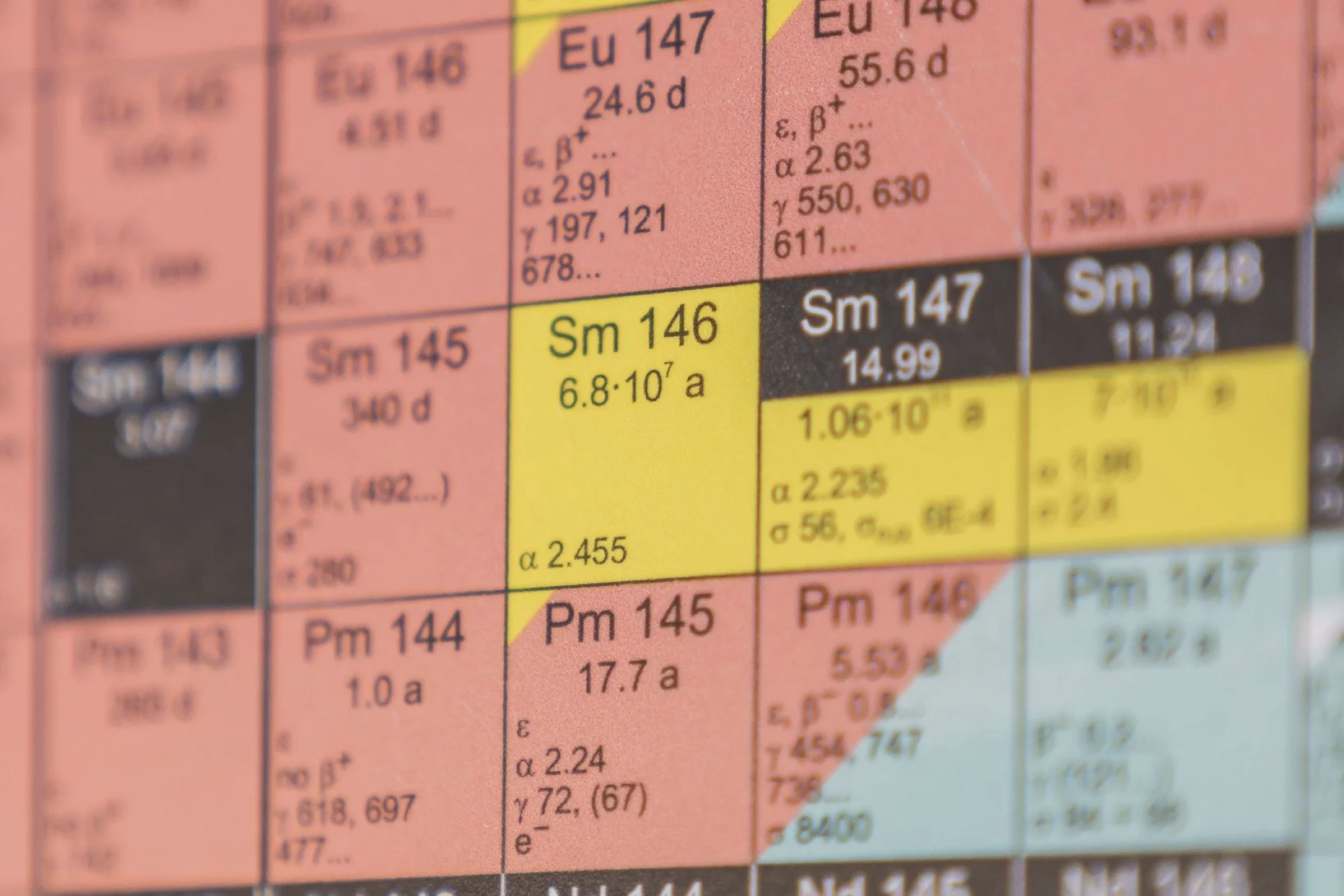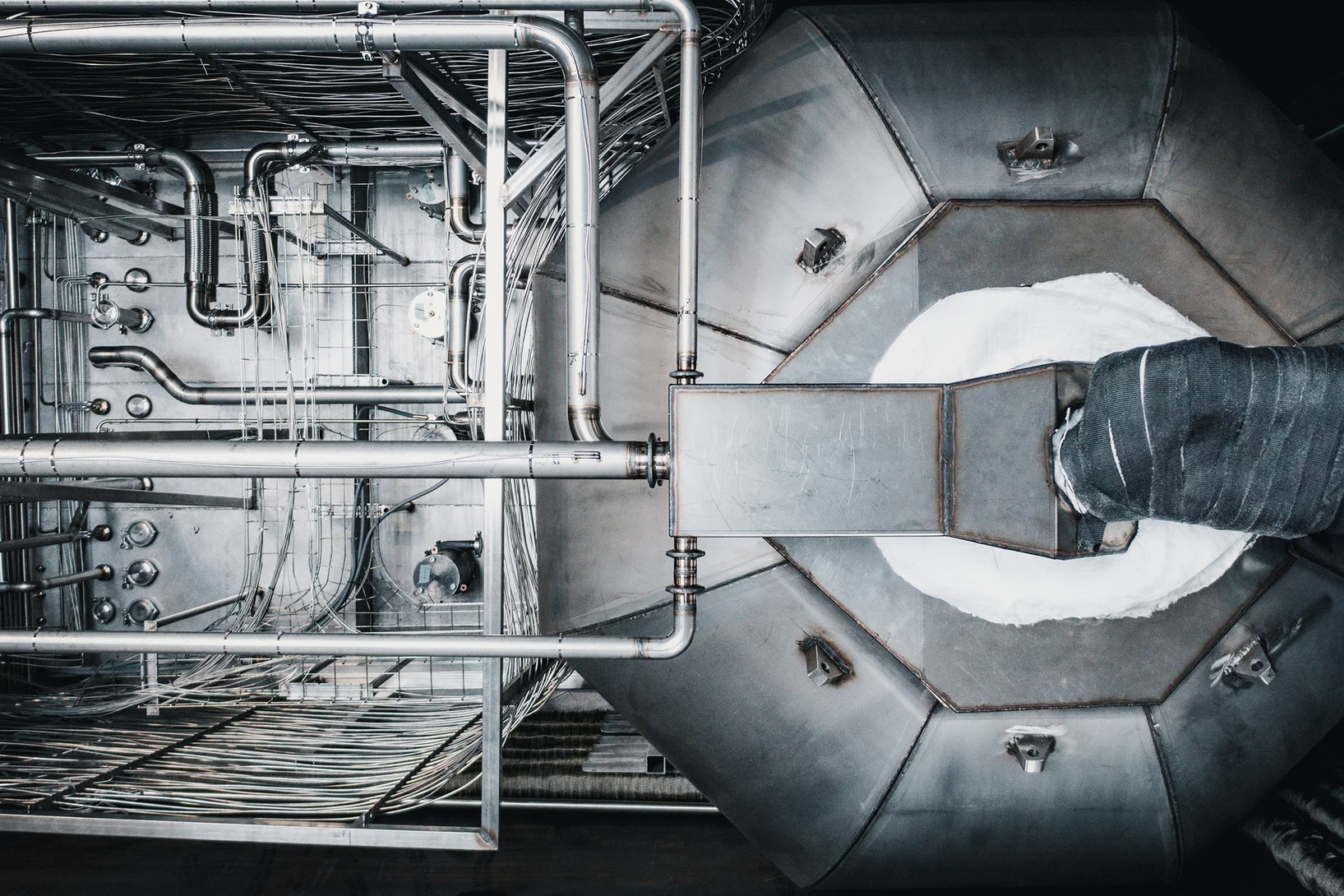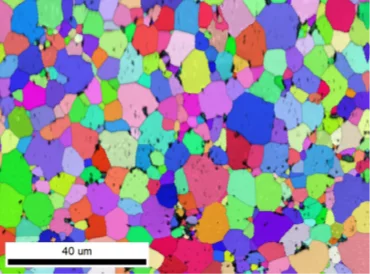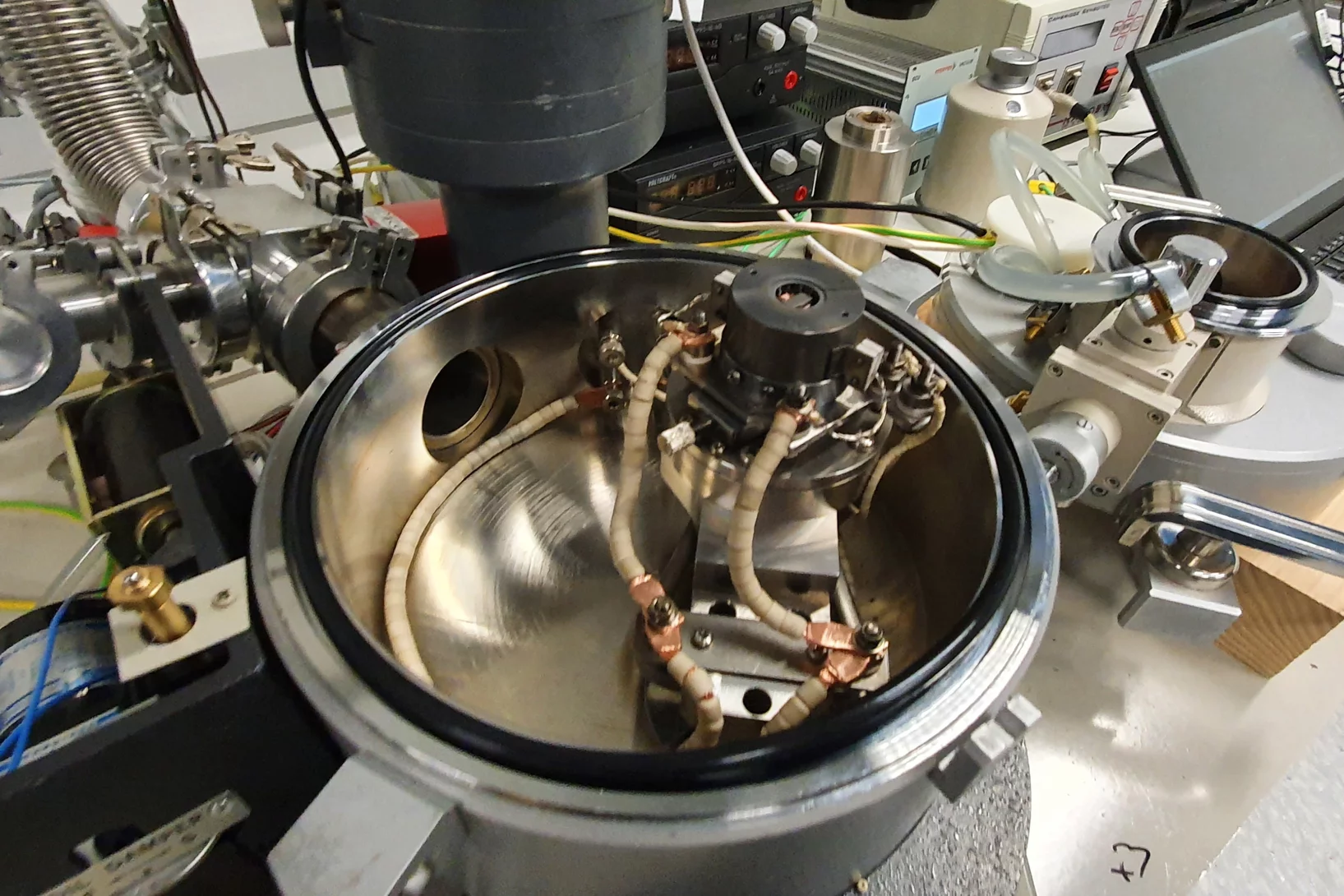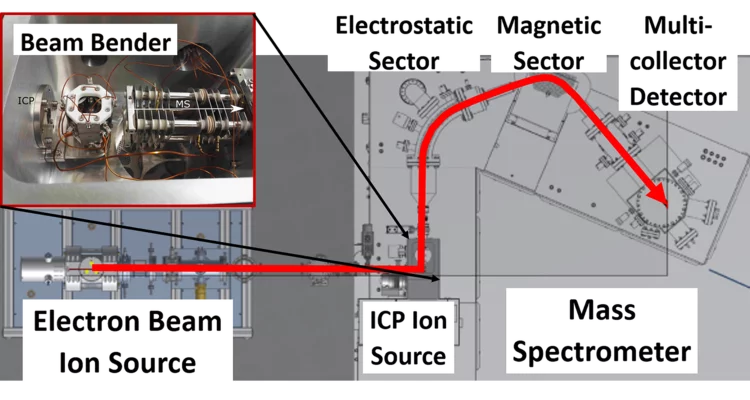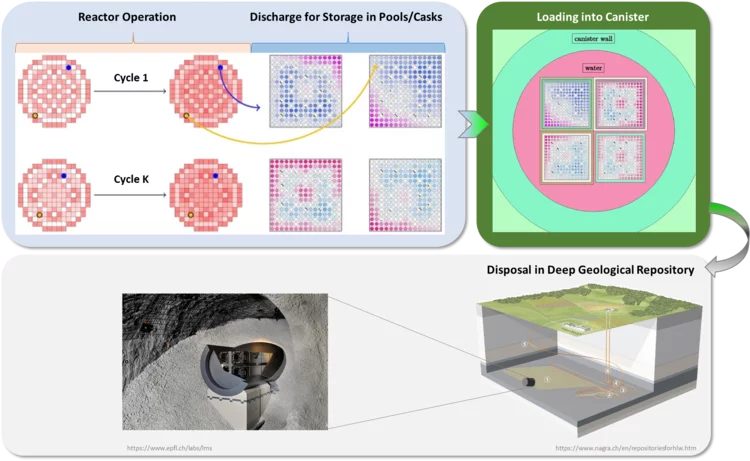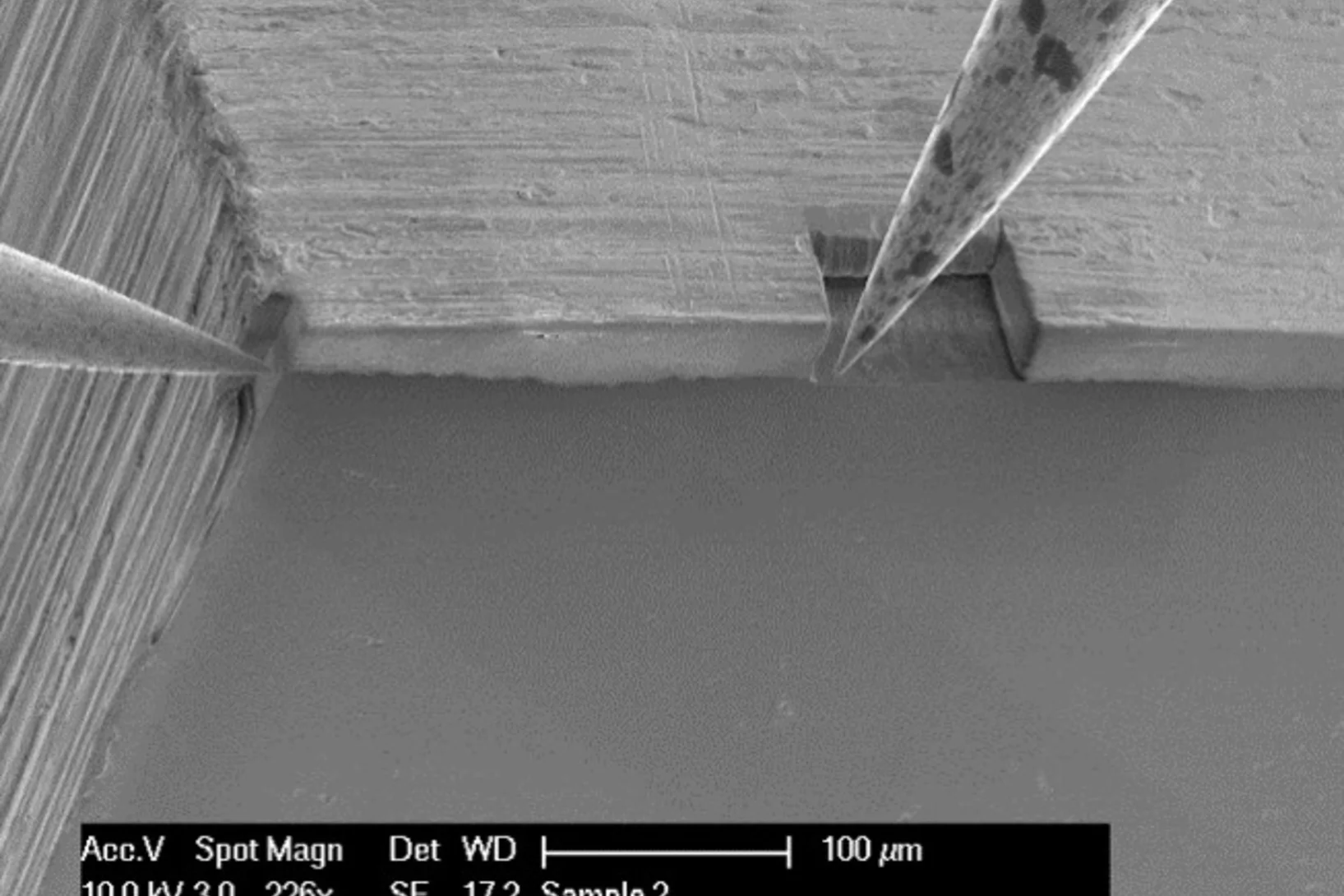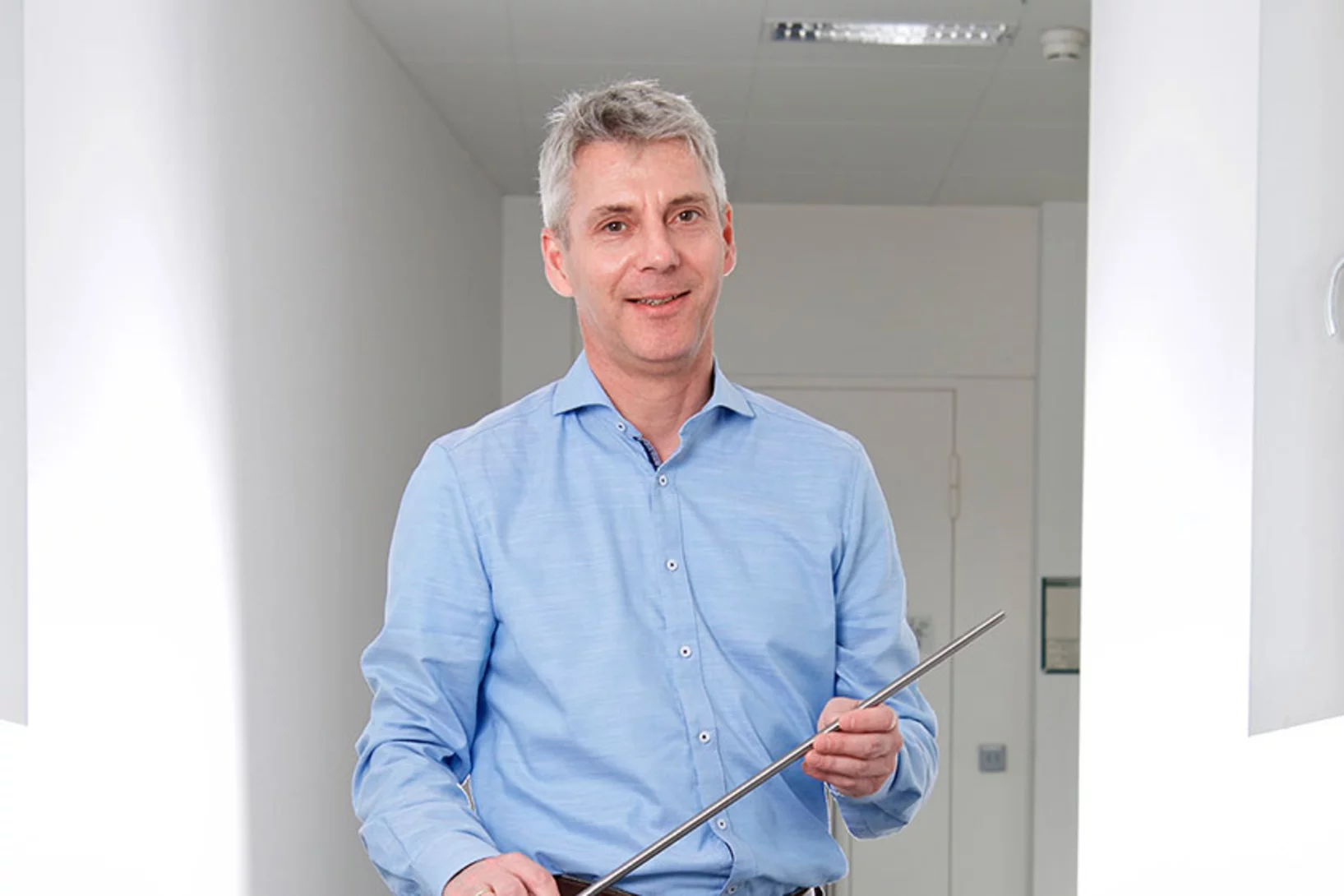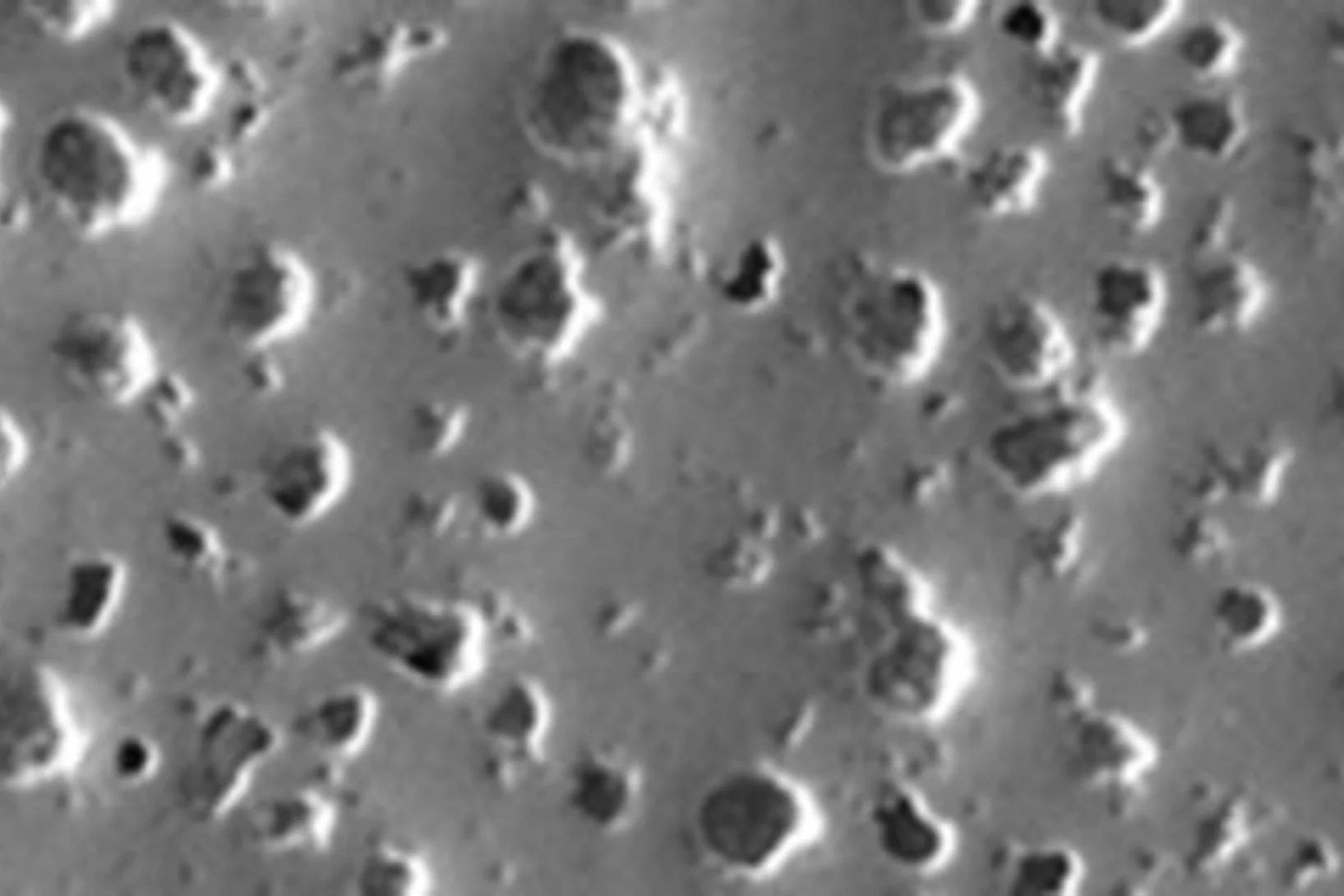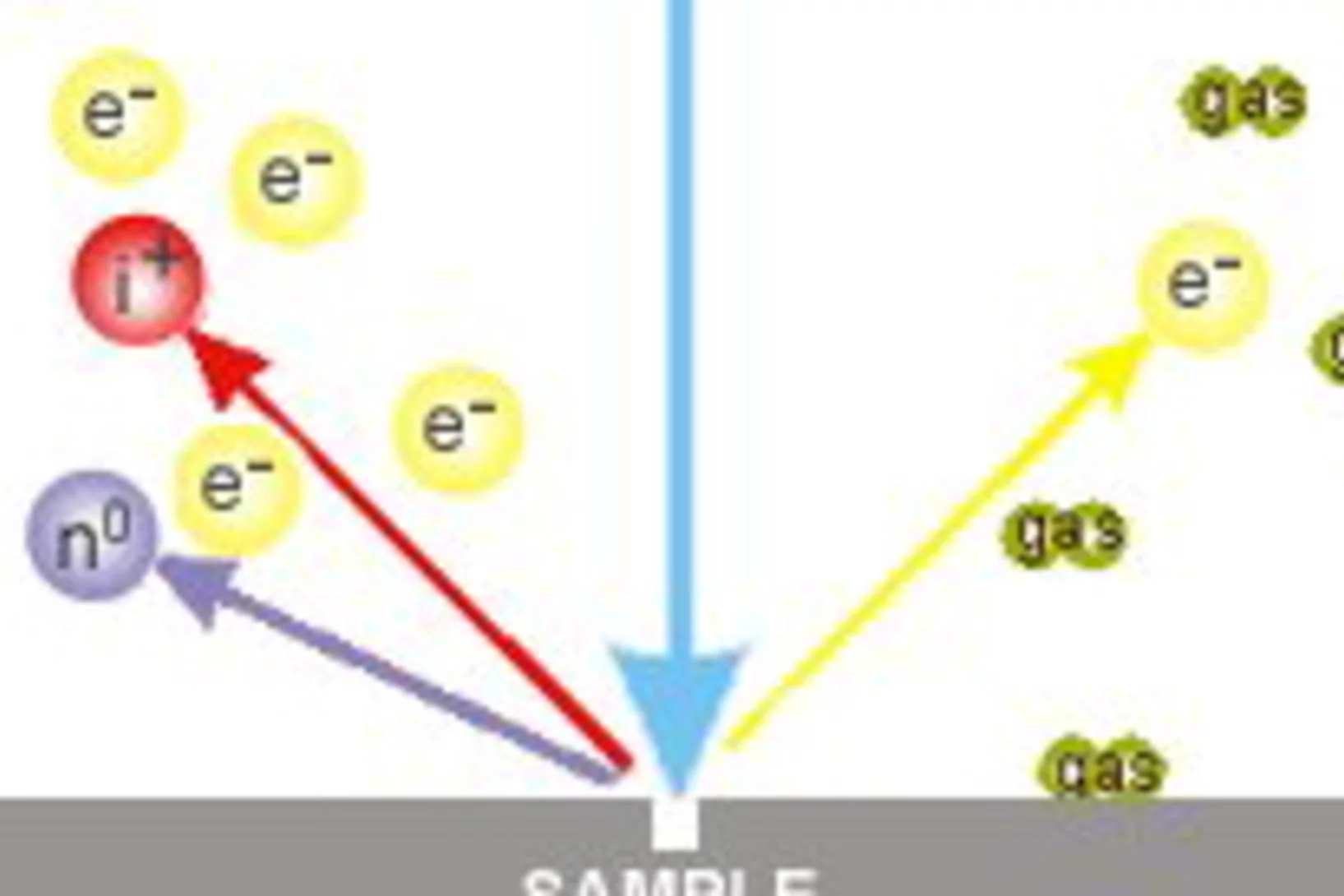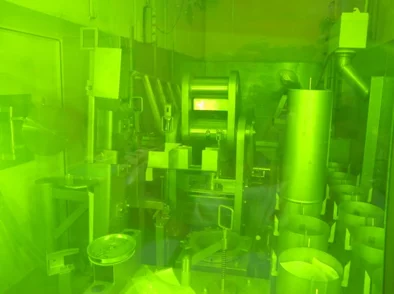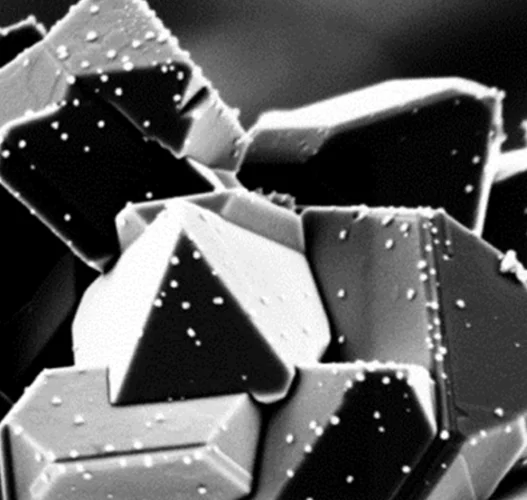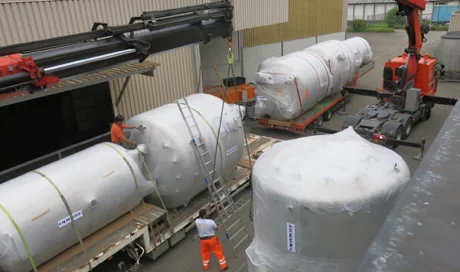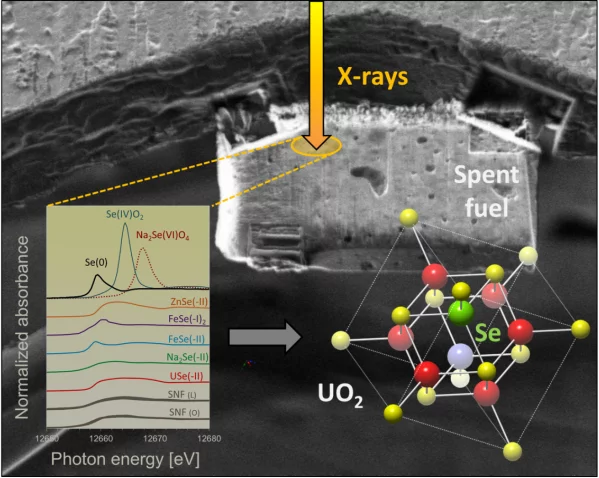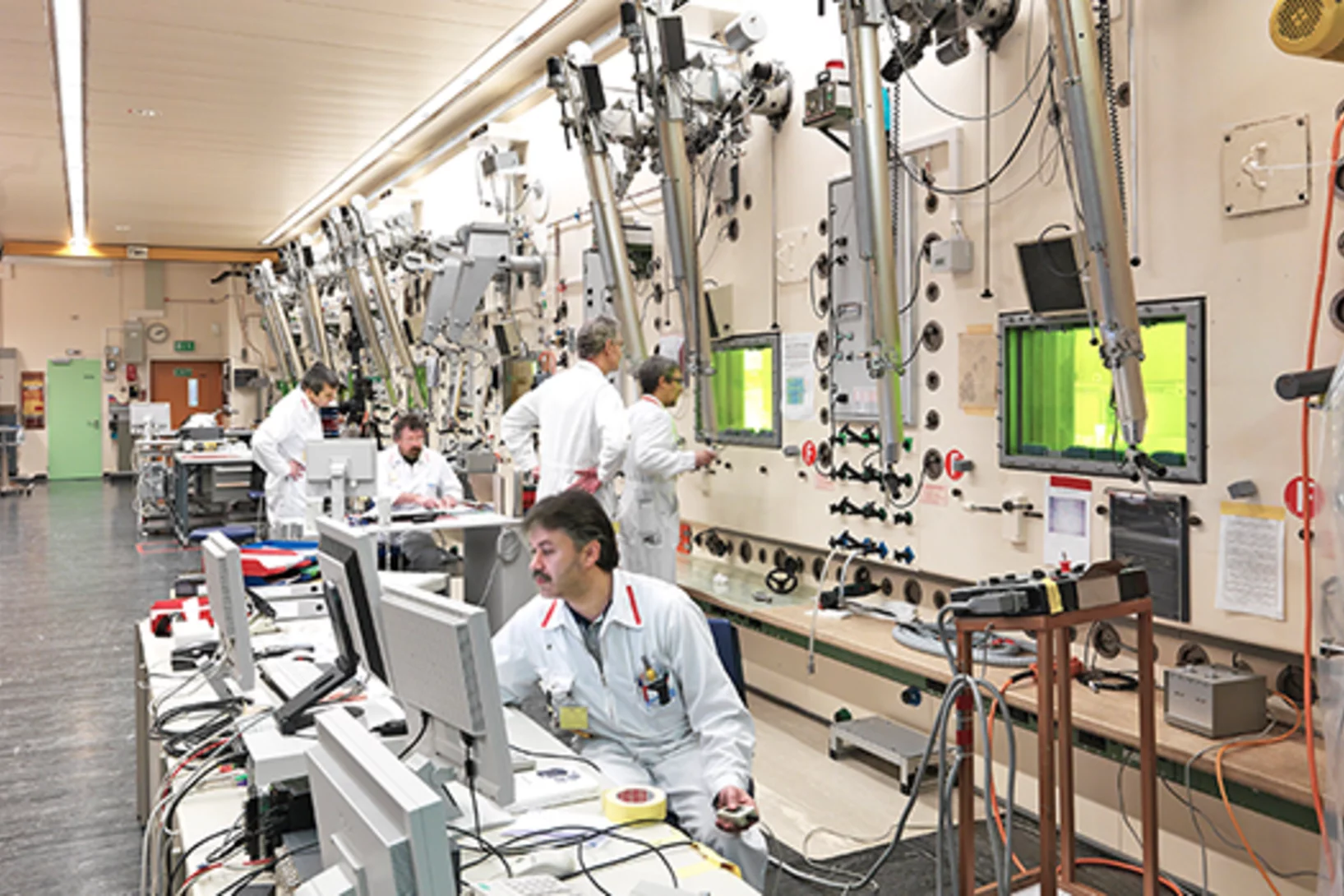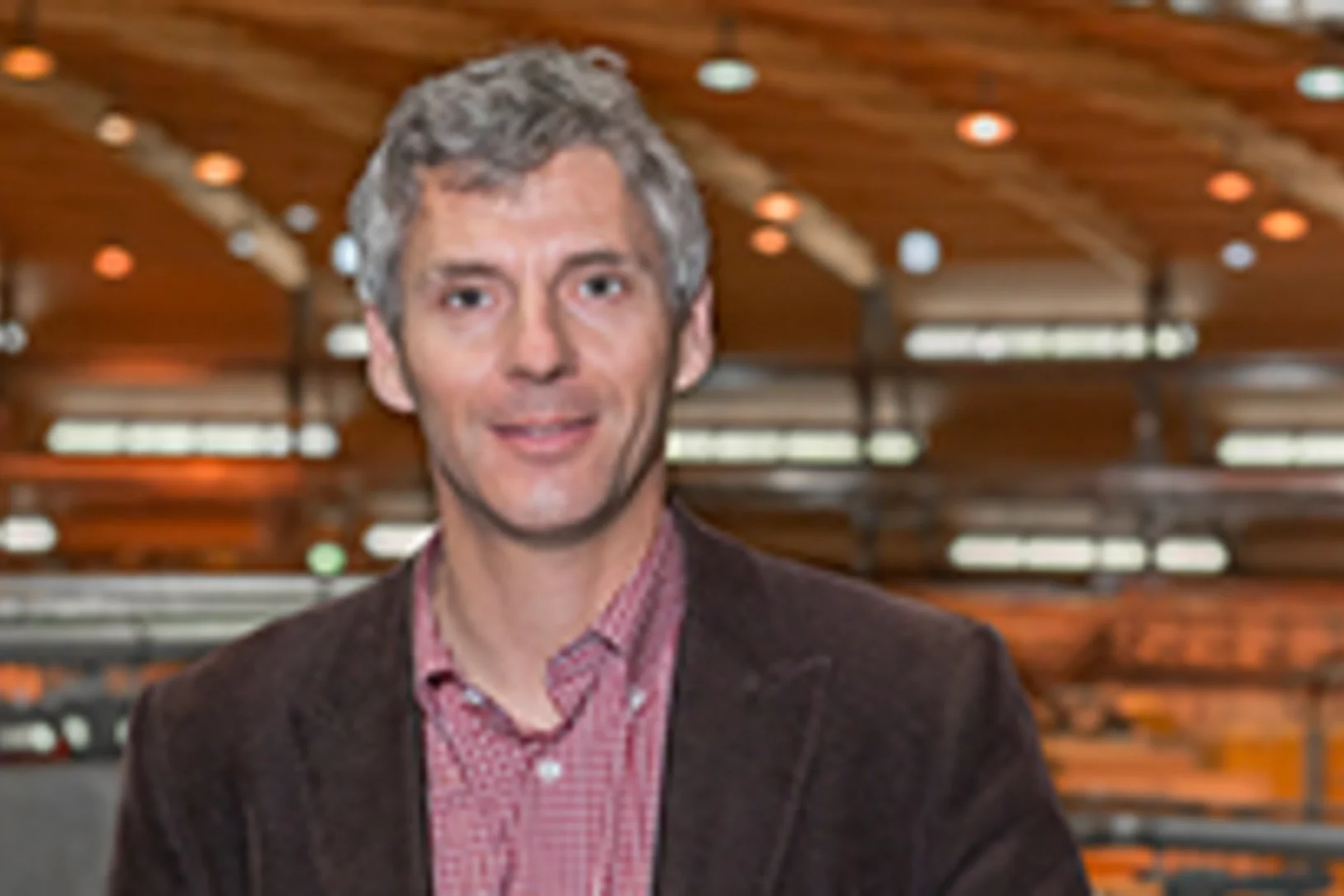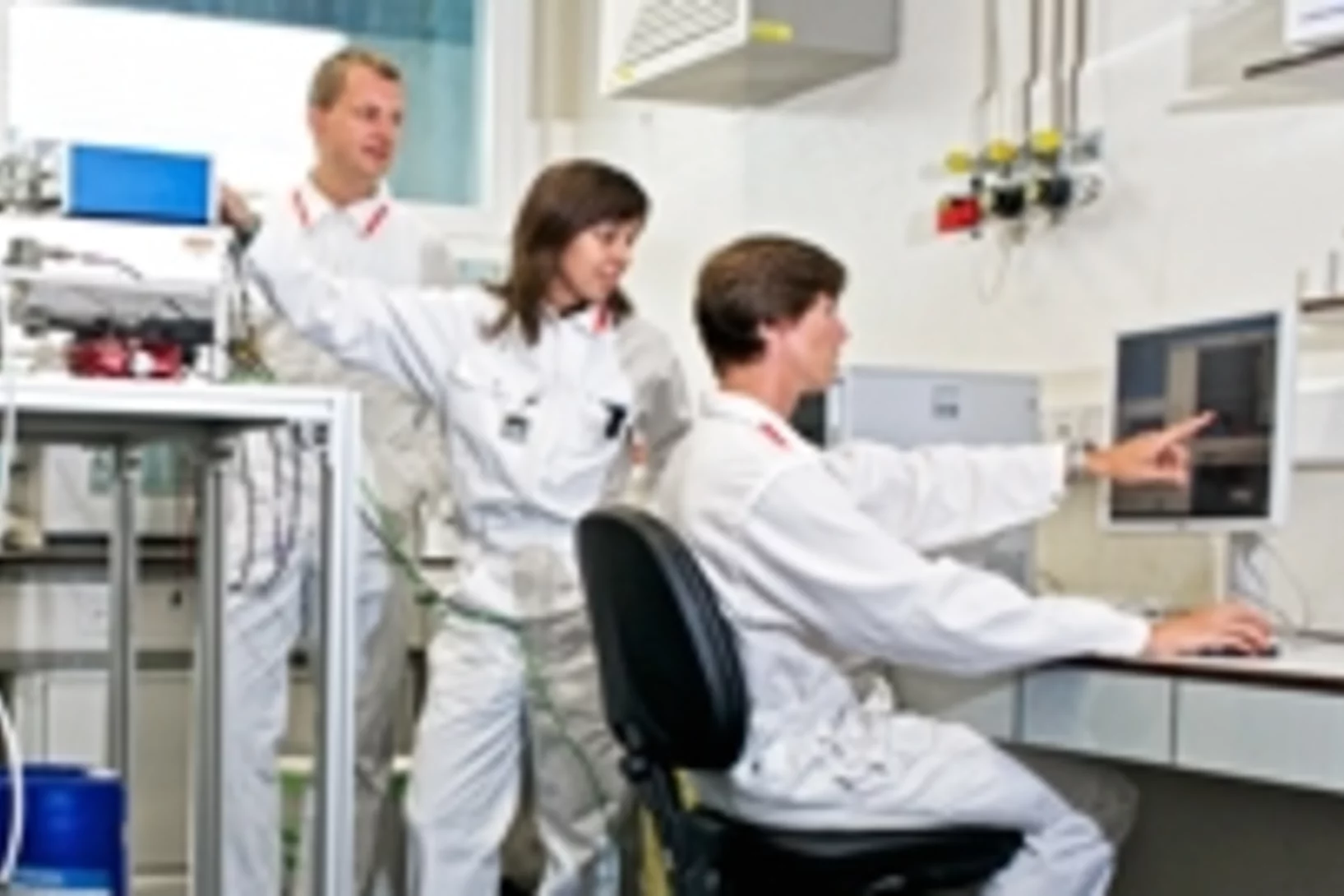Project BALDER at the RRFM-2025
At this year’s European Research Reactor Conference (RRFM-2025) in Aix-en-Provence, the BALDER project presentation drew strong international interest.
Successful preparation for microstructure representation in Zircaloy-4 using light microscopy
Successful preparation for microstructure representation in Zircaloy-4 using light microscopy
Quality assured – successful ISO 9001 re-certification
Quality is no coincidence, but the result of consistent work - our company has once again passed the ISO 9001 recertification audit with flying colours!
60 years of the Hotlab
Switzerland’s longest-running nuclear facility, located at PSI, is celebrating its anniversary today.
Anniversary Celebration: 60 Years of the hotlab
For 60 years, the Swiss Hotlab has been a symbol of cutting-edge research and technological innovation. On September 26, 2024, this remarkable anniversary was celebrated with a ceremonial event in Villigen.
Uniquely precise: New value for the half-life of samarium-146
Researchers at PSI and the Australian National University have re-determined the half-life of samarium-146 with great precision.
Cooperation in reactor research
Copenhagen Atomics and the Paul Scherrer Institute PSI have entered into a collaboration agreement on a thorium molten salt critical experiment.
Forensics: Quantitative tracing of Silicon in CRUD
Chalk River Unidentified Deposits (CRUD) are dissolved and suspended solids, product of the corrosion of structural elements in water circuits of nuclear reactors.
The chemical composition of CRUD is variable as it depends on the composition of the reactor’s structural material, as well as the types of refueling cycles. Recent internal investigations have found unexpected but significant Si-amount in CRUD. The chemical composition of CRUD holds key information for an improved understanding of CRUD formation and possible impact in fuel reliability and contamination prevention.
The standard analytical methods available in the hot laboratory did not allow an easy quantitative determination of the Si-amount in CRUD. A new innovative procedure has been developed and tested with synthetic CRUD name Syntcrud.
The adapted flex-fusion digestion method presented here is able to provide reliable concentrations of several elements within CRUD, including Si, which was not possible in methods used previously for ICPMS measurement.
A unique environment for research on highly radioactive materials
PSI has a unique (worldwide) environment for the investigation of highly radioactive / toxic materials:
> Materials (different fuel types, very high burn-up, different cladding materials, materials activated in SINQ).
> The hot lab with advanced tools for microsample analysis and preparation.
> The large-scale equipment for advanced material analysis.
This unique combination at PSI allows us to meet the needs of our industrial partners to improve plant safety / efficiency, up to fundamental research.
The quantitative distribution of fission products over the cross-section of a pellet with a shielded electron probe microanalyzer (EPMA) used for verification analysis of the material behavior to validate the model. In this context, Xe behavior during transients/failure (LOCA, RIA) is an important safety parameter that can’t be measured with the EPMA at the periphery. Microstructural EBSD investigations on a microsample extend the information horizon, which is deepened at the microXAS beamline by detailed X-ray analyses.
Hydrogen-induced softening effect in zirconium alloys
The fuel used for nuclear energy production is normally enclosed in zirconium-based cladding tubes that constitute the first barrier between the radioactive material and the environment. In water-moderated reactors, cladding tubes tend to corrode, generating hydrogen as side product. The study of the hydrogen embrittlement in zirconium alloys is of high relevance for the industry.
Depending on temperature, local hydrogen concentration, and local stress conditions, different hydrogen-induced embrittlement mechanisms can be active in the cladding material: in certain conditions hydrogen in solid solution might cause material softening through a mechanism known as hydrogen enhanced localized plasticity (HELP).
With the goal of determining the conditions necessary to activate the HELP effect in zirconium alloys, samples have been evaluated by different micro-mechanical and macro-mechanical techniques. Results highlight the importance of the interplay between solid solution hydrogen and hydrides on the hardness and yield point of the tested materials.
MC-EBIS-ICP-MS – a unique dual Ion Source Mass Spectrometer
This highlight presents a successful, in-house developed integration of an Electron Beam Ion Source (EBIS) able to ionize gases to high charge states with a customized commercial MC-ICP-MS. The successful joining of the two ion flight paths is a milestone towards comprehensive routine analyses of solids, liquids, and gases using THE SAME MASS SPECTROMETER, the latter analyses free from atmospheric contamination. After implementation of an introduction system for gas mass spectrometry, routine analyses will comprise isotope ratio and relative abundance determinations of fission gases in used nuclear fuel. In addition to the unique versatility of the MC-EBIS-ICP-MS, inclusion of the EBIS furthers opens the little-studied field of mass spectrometry of highly charged ions.
Confirmed quality – Successful ISO 9001 recertification
Quality is our commitment – and the successful ISO 9001 recertification proves that we live up to it!
New element and speciation specific analytical options at AHL
The Hot Laboratory division (AHL) within PSI’s Nuclear Energy and Safety (NES) division continually upgrades and advances its analytical infrastructure to provide cutting-edge scientific service to PSI’s researchers and industrial customers. A new, fully automatable and highly flexible Ion Chromatograph (IC) furthers AHL’s efforts in sample miniaturization and extends the spectrum of destructive analytical capabilities to element and speciation specific analyses. With the new IC and its modern ICP-MS (Inductively Coupled Plasma Mass Spectrometry) facilities, AHL offers innovative scientific options for nuclear and general research. Moreover, speciation analyses by IC-ICP-MS for polyvalent inorganic water pollutants such as Cr or As and the acquisition of a new ICP-OES system (Inductively Coupled Plasma Optical Emission Spectrometry) enable future autonomy in wastewater management.
Used Nuclear Fuel: from Better Characterization to Better Optimization
A safe, economical and environmental friendly disposal of used nuclear fuel represents an essential objective of relevance for all. This guides the approach under development at the laboratory for reactor physics and thermal-hydraulics. Establish higher resolution simulation methods to gain more detailed knowledge on the content of each single nuclear fuel rod ever irradiated in a reactor. Thereafter, use this knowledge to explore optimization approaches that could potentially enlarge the range of disposal options allowing to fulfill the highest level of safety standards while reducing economical costs and geological footprints at the same time.
Hydrogen uptake into Zr-based fuel claddings
At the hot surface of a fuel rod cladding in the reactor water, the water is partially dissociated in hydrogen and oxygen, leading to corrosion of the cladding and to the uptake of a part of the created hydrogen. Hydrogen in solid solution and in precipitated form changes the mechanical properties of the cladding tube. The uptake of the hydrogen through the dense oxide layer is unclear. The structure and physical properties of the oxide near the metal-interface is critical The resistivity of the oxide increases with distance from the interface. Nb-containing alloys show lower resistivity in the oxide close to the metal interface, and exhibit a lower hydrogen pick-up. The time in the reactor is an important factor, leading to increasing resistivity in the oxide close to the metal interface, and a higher hydrogen uptake late in life.
Relevance of the findings: considering resistivity, the model of hydrogen uptake is better understood, revealing hints for further cladding development.
Cladding tubes and their properties
In the Nuclear Energy and Safety Research Division at PSI, Johannes Bertsch focuses on the so-called cladding tubes that are used in nuclear power plants.
New operational licence
On 21st of February 2019 the Federal Department of the Environment, Transport, Energy and Communications (DETEC) issued the new operational licence for the PSI Hotlab facility
ISO 9001 Recertification passed – Quality at the highest level
Once again this year, our quality management system has been audited – successfully! Our ISO 9001 certification remains in place.
UO2 fuel behavior at very high burnup
The investigation of the nuclear fuel at very high burnup is critical for evaluating the safety margin for the evaluated fuel in normal as well as in accidental conditions. PSI is one of the very few hot laboratories which possess access to irradiated UO2 fuel with very high burnup from commercial reactors. The application of relevant tools for the investigation, handling and analysis of those highly irradiated materials emphasize the necessary expertise.
New Focused Ion Beam (FIB) in the Hot Laboratory
The implementation of Focused Ion Beam instruments in material research laboratories during the last decade has not only strongly improved the preparation of very thin specimens for the Transmission Electron Microscope (TEM), in particular at interfaces, but also led to the development of new analysis methods inside the instrument itself. It became a powerful instrument for the analyses of highly radioactive materials, because it allows for the production and analysis of very small specimens that can be then analyzed with very sensitive detectors without strong interference from the radiation field of the specimen itself.
Refurbishment of HZ6
The hot cell 6 is dedicated to the storage and conditioning of high level solid waste. This cell has been completely refurbished in the period 2015 – 2017. This include the complete dismantling and conditioning of the highly fuel contaminated old infrastructure, the cleaning of the cell and the installation and test of the new improved infrastructure.
Pt nanoparticles: The key to improved stress corrosion cracking mitigation in boiling water reactors
The formation and growth of cracks by stress corrosion cracking (SCC)in reactor internals and recirculation pipes due to the highly oxidising environment is a serious issue in boiling water reactors. At first, SCC mitigation was attempted by injecting H2 into the feed water, where the injected H2 recombines with the H2O2 and O2 to water and reduces the electrochemical corrosion potential, and consequently the SCC susceptibility. Several disadvantages of the injection of high amounts of H2, have led to the development of noble metal additions to the reactor feed water. With injection of a much smaller amount of H2, the noble metal particles of a few nanometres in size, formed in-situ, work as catalysts for the efficient reduction of the oxidizing species formed by radiolysis, and thus lower the ECP and SCC susceptibility.
New Sample and Task Management Software
The AHL accounts, according to internal as well as external regulations, nuclear materials and moderators. For the detection and control of nuclear fuel samples and monitoring with respect to criticality safety, AHL developed a new sample and task management software (IPV).
New sewage cleaning system and tank farm
PSI Hotlab is collecting and radiologically cleaning the entire radioactive waste water from the PSI East side. In the years 2014-2016 a major refurbishment took place, where the old tank farm was decommissioned, and new stainless-steel tanks were installed together with new, modern ultrafiltration systems during normal operation of the lab.
The chemical state of 79Se in spent nuclear fuel
An interdisciplinary study conducted at different PSI laboratories (LES, AHL, LRS, SYN) in collaboration with Studsvik AB (Sweden) demonstrates that selenium originating from fission in light water reactors is tightly bound in the crystal lattice of UO2. This finding has positive consequences for the safety assessment of high-level radioactive waste repository planned in Switzerland, as it implies (contrary to previous assumptions) that the safety-relevant radionuclide 79Se will be released at extremely low rates during aqueous corrosion of the waste in a deep-seated repository.
The hotlab research facility
Start of the public examination period for renewed authorization to operate the research facility hotlab at the Paul Scherrer Institute PSIThe hotlab at the Paul Scherrer Institute PSI is a facility, unique in Switzerland, where researchers study highly radioactive materials in specially shielded chambers called hot cells. It serves the needs of applied materials research on highly radioactive samples from core structural components and fuel rods from nuclear power plants, research reactors, and the PSI radiation facilities. Through its operation of the hotlab, the Paul Scherrer Institute also contributes to the safety of the nuclear power plants in Switzerland. Around thirty staff members attend to the hotlab's safety technology and analysis infrastructure.
Tested Quality – ISO 9001 Recertification successfully completed
Quality that convinces: Our company has passed the ISO 9001 recertification audit with flying colors!
50 years of hotlab
50 years of cutting-edge research at the Swiss Hot Laboratory: On September 26, 2014, this impressive anniversary was celebrated in Hotwil with current and former employees.
Hydrogen: a Trojan horse in fuel-rod cladding tubes
In nuclear reactors, water is dissociated at the surface of the hot fuel elements, thereby producing hydrogen. This hydrogen can penetrate the fuel cladding surrounding the actual fuel and weaken it mechanically. Researchers from the Paul Scherrer Institute (PSI) have been using neutrons and synchrotron radiation to study how the hydrogen gets into the cladding tube and what impact it can have once inside.
Well-rounded concept for less nuclear waste
The idea of producing fuel for nuclear power stations in form of a package of spheres instead of today’s customary pellets was already born back in the 1960s. There was promise of a subsequent simplification of fuel production and a considerable reduction in the amount of radioactive waste both in the production of the fuel itself and after its use in a nuclear power station. However, the spherical fuel was never implemented as the fast reactors for which it was conceived were never built at a large scale. The Paul Scherrer Institute (PSI) has also been involved in the research on spherical fuel in the past. Now several projects partly funded by the EU are currently underway at the PSI again to refine the production of fuel spheres further. This form of fuel could either be used in special plants to reduce waste or in fast generation IV reactors, which in a closed cycle also produce less long-lived waste.





